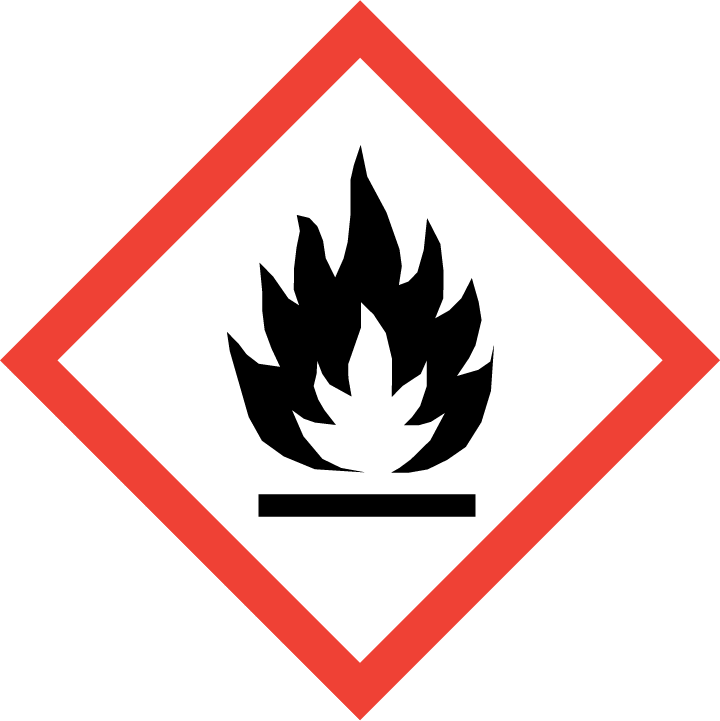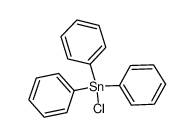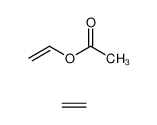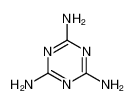| Product name | calcium atom |
|---|
| Product number | - |
|---|---|
| Other names | activated calcium powder |
| Identified uses | For industry use only. Processing aids, not otherwise listed |
|---|---|
| Uses advised against | no data available |
| Company | MOLBASE (Shanghai) Biotechnology Co., Ltd. |
|---|---|
| Address | Floor 4 & 5, Building 12, No. 1001 North Qinzhou Road, Xuhui District, Shanghai, China |
| Telephone | +86(21)64956998 |
| Fax | +86(21)54365166 |
| Emergency phone number | +86-400-6021-666 |
|---|---|
| Service hours | Monday to Friday, 9am-5pm (Standard time zone: UTC/GMT +8 hours). |
Substances and mixtures, which in contact with water, emit flammable gases, Category 2
2.2 GHS label elements, including precautionary statements| Pictogram(s) |  |
|---|---|
| Signal word | Danger |
| Hazard statement(s) | H261 In contact with water releases flammable gas |
| Precautionary statement(s) | |
| Prevention | P223 Do not allow contact with water. P231+P232 Handle and store contents under inert gas/.... Protect from moisture. P280 Wear protective gloves/protective clothing/eye protection/face protection. |
| Response | P302+P335+P334 IF ON SKIN: Brush off loose particles from skin. Immerse in cool water [or wrap in wet bandages]. P370+P378 In case of fire: Use ... to extinguish. |
| Storage | P402+P404 Store in a dry place. Store in a closed container. |
| Disposal | P501 Dispose of contents/container to ... |
none
3.Composition/information on ingredients 3.1 Substances| Chemical name | Common names and synonyms | CAS number | EC number | Concentration |
|---|---|---|---|---|
| calcium atom | calcium atom | 7440-70-2 | none | 100% |
Consult a physician. Show this safety data sheet to the doctor in attendance.
If inhaledFresh air, rest. Refer immediately for medical attention.
In case of skin contactRinse contaminated clothes (fire hazard) with plenty of water. Rinse skin with plenty of water or shower. Refer immediately for medical attention.
In case of eye contactRinse with plenty of water for several minutes (remove contact lenses if easily possible). Refer immediately for medical attention.
If swallowedRinse mouth. Do NOT induce vomiting. Refer immediately for medical attention.
4.2 Most important symptoms/effects, acute and delayedContact with eyes or skin produces caustic burns. (USCG, 1999)
4.3 Indication of immediate medical attention and special treatment needed, if necessaryBasic treatment: Establish a patent airway. Suction if necessary. Watch for signs of respiratory insufficiency and assist ventilations if necessary. Administer oxygen by nonrebreather mask at 10 to 15 L/min. Monitor for pulmonary edema and teat if necessary ... . Monitor for shock and treat if necessary ... . Anticipate seizures and treat if necessary ... . For eye contamination, flush eyes immediately with water. Irrigate each eye continuously with normal saline during transport ... . Do not use emetics. For ingestion, rinse mouth and administer 5 ml/kg up to 200 M of water for dilution if the patient can swallow, has a strong gag reflex, and does not drool ... . If product was ingested, protect yourself from contact with vomitus, since it may cause burns. /Flammable solids/
5.Fire-fighting measures 5.1 Extinguishing media Suitable extinguishing mediaUse approved Class D extinguishers or smother with dry sand, dry clay, or dry ground limestone. DO NOT use carbon dioxide or halogenated extinguishing agents. DO NOT use water. Violent reaction may result.
5.2 Specific hazards arising from the chemicalExcerpt from ERG Guide 138 [Substances - Water-Reactive (Emitting Flammable Gases)]: Produce flammable gases on contact with water. May ignite on contact with water or moist air. Some react vigorously or explosively on contact with water. May be ignited by heat, sparks or flames. May re-ignite after fire is extinguished. Some are transported in highly flammable liquids. Runoff may create fire or explosion hazard. (ERG, 2016)
5.3 Special protective actions for fire-fightersWear self-contained breathing apparatus for firefighting if necessary.
6.Accidental release measures 6.1 Personal precautions, protective equipment and emergency proceduresUse personal protective equipment. Avoid dust formation. Avoid breathing vapours, mist or gas. Ensure adequate ventilation. Evacuate personnel to safe areas. Avoid breathing dust. For personal protection see section 8.
6.2 Environmental precautionsPersonal protection: complete protective clothing including self-contained breathing apparatus. Consult an expert! Remove all ignition sources. Cover the spilled material with dry sand or dry powder. Do NOT absorb in saw-dust or other combustible absorbents. Carefully collect remainder. Then store and dispose of according to local regulations.
6.3 Methods and materials for containment and cleaning upPick up and arrange disposal. Sweep up and shovel. Keep in suitable, closed containers for disposal.
7.Handling and storage 7.1 Precautions for safe handlingAvoid contact with skin and eyes. Avoid formation of dust and aerosols. Avoid exposure - obtain special instructions before use.Provide appropriate exhaust ventilation at places where dust is formed. For precautions see section 2.2.
7.2 Conditions for safe storage, including any incompatibilitiesFireproof. Dry. Well closed. Keep under inert gas. Separated from incompatible materials. See Chemical Dangers.Store in a cool, dry, well-ventilated location. Separate from water, alcohols, acids, and halogens. Immediately remove and properly dispose of any spilled material.
8.Exposure controls/personal protection 8.1 Control parameters Occupational Exposure limit valuesno data available
Biological limit valuesno data available
8.2 Appropriate engineering controlsHandle in accordance with good industrial hygiene and safety practice. Wash hands before breaks and at the end of workday.
8.3 Individual protection measures, such as personal protective equipment (PPE) Eye/face protectionSafety glasses with side-shields conforming to EN166. Use equipment for eye protection tested and approved under appropriate government standards such as NIOSH (US) or EN 166(EU).
Skin protectionWear impervious clothing. The type of protective equipment must be selected according to the concentration and amount of the dangerous substance at the specific workplace. Handle with gloves. Gloves must be inspected prior to use. Use proper glove removal technique(without touching glove's outer surface) to avoid skin contact with this product. Dispose of contaminated gloves after use in accordance with applicable laws and good laboratory practices. Wash and dry hands. The selected protective gloves have to satisfy the specifications of EU Directive 89/686/EEC and the standard EN 374 derived from it.
Respiratory protectionWear dust mask when handling large quantities.
Thermal hazardsno data available
9.Physical and chemical properties| Physical state | softish silver-white metal |
|---|---|
| Colour | Lustrous, silver-white surface (when freshly cut); face-centered cubic structure below 300°C; acquires bluish-gray tarnish on exposure to moist air |
| Odour | no data available |
| Melting point/ freezing point | 845ºC |
| Boiling point or initial boiling point and boiling range | 1484°C(lit.) |
| Flammability | Forms flammable gas on contact with water or damp air. May ignite spontaneously on contact with air. |
| Lower and upper explosion limit / flammability limit | no data available |
| Flash point | no data available |
| Auto-ignition temperature | 1454+--7.78°C (USCG, 1999) |
| Decomposition temperature | no data available |
| pH | no data available |
| Kinematic viscosity | no data available |
| Solubility | Insoluble in benzene; reacts with water |
| Partition coefficient n-octanol/water (log value) | no data available |
| Vapour pressure | 10 mm Hg @ 983°C |
| Density and/or relative density | 1.54g/mLat 25°C(lit.) |
| Relative vapour density | no data available |
| Particle characteristics | no data available |
no data available
10.2 Chemical stabilityStable under recommended storage conditions.
10.3 Possibility of hazardous reactionsFlammable when finely divided.Ignites in air when finely divided.Boron trifluoride reacts with incandescence when heated with alkali metals or alkaline earth metals except magnesium [Merck 11th ed. 1989]. Calcium reacts violently with acids [Lab. Govt. Chemist 1965]. Finely divided calcium burns spontaneously in chlorine at elevated temperatures [Mellor 3:637, 638, 651 1946-47]. Finely divided or massive calcium burns spontaneously in fluorine at ordinary temperatures. It is incompatible with metal oxides, alkali metal hydroxides, chlorine fluorides, dinitrogen tetraoxide, and sulfur(with sulfur reacts explosively when ignited) [Bretherick, 5th Ed., 1995].
10.4 Conditions to avoidno data available
10.5 Incompatible materialsCalcium reacts violently with acids.
10.6 Hazardous decomposition productsCombustion may produce irritants and toxic gases.
11.Toxicological information Acute toxicity- Oral: no data available
- Inhalation: no data available
- Dermal: no data available
no data available
Serious eye damage/irritationno data available
Respiratory or skin sensitizationno data available
Germ cell mutagenicityno data available
Carcinogenicityno data available
Reproductive toxicityno data available
STOT-single exposureno data available
STOT-repeated exposureno data available
Aspiration hazardno data available
12.Ecological information 12.1 Toxicity- Toxicity to fish: no data available
- Toxicity to daphnia and other aquatic invertebrates: no data available
- Toxicity to algae: no data available
- Toxicity to microorganisms: no data available
no data available
12.3 Bioaccumulative potentialno data available
12.4 Mobility in soilno data available
12.5 Other adverse effectsno data available
13.Disposal considerations 13.1 Disposal methods ProductThe material can be disposed of by removal to a licensed chemical destruction plant or by controlled incineration with flue gas scrubbing. Do not contaminate water, foodstuffs, feed or seed by storage or disposal. Do not discharge to sewer systems.
Contaminated packagingContainers can be triply rinsed (or equivalent) and offered for recycling or reconditioning. Alternatively, the packaging can be punctured to make it unusable for other purposes and then be disposed of in a sanitary landfill. Controlled incineration with flue gas scrubbing is possible for combustible packaging materials.
14.Transport information 14.1 UN Number| ADR/RID: UN1401 | IMDG: UN1401 | IATA: UN1401 |
| ADR/RID: CALCIUM |
| IMDG: CALCIUM |
| IATA: CALCIUM |
| ADR/RID: 4.3 | IMDG: 4.3 | IATA: 4.3 |
| ADR/RID: II | IMDG: II | IATA: II |
| ADR/RID: no | IMDG: no | IATA: no |
no data available
14.7 Transport in bulk according to Annex II of MARPOL 73/78 and the IBC Codeno data available
15.Regulatory information 15.1 Safety, health and environmental regulations specific for the product in question| Chemical name | Common names and synonyms | CAS number | EC number |
|---|---|---|---|
| calcium atom | calcium atom | 7440-70-2 | none |
| European Inventory of Existing Commercial Chemical Substances (EINECS) | Listed. | ||
| EC Inventory | Listed. | ||
| United States Toxic Substances Control Act (TSCA) Inventory | Listed. | ||
| China Catalog of Hazardous chemicals 2015 | Listed. | ||
| New Zealand Inventory of Chemicals (NZIoC) | Listed. | ||
| Philippines Inventory of Chemicals and Chemical Substances (PICCS) | Listed. | ||
| Vietnam National Chemical Inventory | Listed. | ||
| Chinese Chemical Inventory of Existing Chemical Substances (China IECSC) | Listed. | ||
| Creation Date | Aug 16, 2017 |
|---|---|
| Revision Date | Aug 16, 2017 |
- CAS: Chemical Abstracts Service
- ADR: European Agreement concerning the International Carriage of Dangerous Goods by Road
- RID: Regulation concerning the International Carriage of Dangerous Goods by Rail
- IMDG: International Maritime Dangerous Goods
- IATA: International Air Transportation Association
- TWA: Time Weighted Average
- STEL: Short term exposure limit
- LC50: Lethal Concentration 50%
- LD50: Lethal Dose 50%
- EC50: Effective Concentration 50%
- IPCS - The International Chemical Safety Cards (ICSC), website: http://www.ilo.org/dyn/icsc/showcard.home
- HSDB - Hazardous Substances Data Bank, website: https://toxnet.nlm.nih.gov/newtoxnet/hsdb.htm
- IARC - International Agency for Research on Cancer, website: http://www.iarc.fr/
- eChemPortal - The Global Portal to Information on Chemical Substances by OECD, website: http://www.echemportal.org/echemportal/index?pageID=0&request_locale=en
- CAMEO Chemicals, website: http://cameochemicals.noaa.gov/search/simple
- ChemIDplus, website: http://chem.sis.nlm.nih.gov/chemidplus/chemidlite.jsp
- ERG - Emergency Response Guidebook by U.S. Department of Transportation, website: http://www.phmsa.dot.gov/hazmat/library/erg
- Germany GESTIS-database on hazard substance, website: http://www.dguv.de/ifa/gestis/gestis-stoffdatenbank/index-2.jsp
- ECHA - European Chemicals Agency, website: https://echa.europa.eu/































